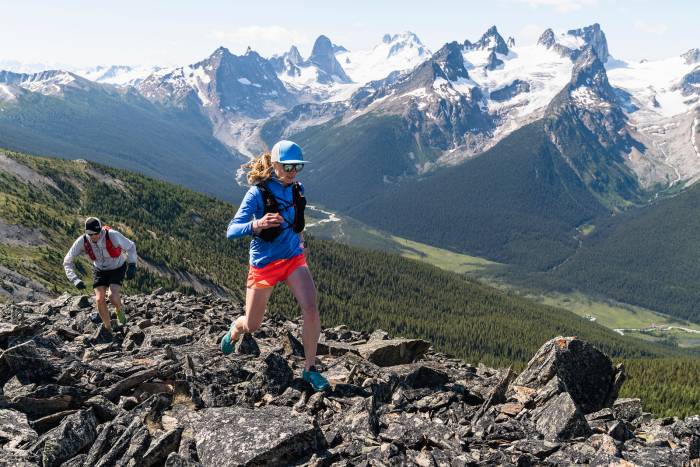Outdoor Research (OR) has a reputation for producing no-nonsense outerwear for hardcore alpinists, and GORE-TEX is a staple waterproof-breathable membrane for that audience. Gore released GORE-TEX Pro in 2020, and the big news was that this new version was stretchy.
Stretchy GORE-TEX? For this ice climber, that was great news — if it worked. I was dubious, especially of its durability. But I shoved them into my bag anyway as I packed for a trip to search for big ice first ascents in the backcountry of Alaska.
OR released the Archangel Collection last year. It touts the use of the new GORE-TEX Pro to “balance speed and efficiency without compromising protection.” I took the jacket and bibs to Alaska last month for a week of scouting and attempting ice first ascents in the backcountry. Here’s what I found.
Looking for a new hardshell jacket? Check out how the Archangel compares to the rest of our recommendations in our Best Hardshell Jackets Buyer’s Guide.

Outdoor Research Archangel: Stretch Where It Matters
OR uses the Stretch Technology version of GORE-TEX Pro (Gore claims 20% stretch) in the upper back, lower hood, knees, and crotch gusset.
The panels in the upper back were noticeable while poling during approach skiing and while ice climbing on harder pitches. I am broad across the shoulders for how small my torso is, and most men’s medium jackets are a bit tight across the upper back.
But the Outdoor Research Archangel jacket alleviated the usual tension. I could tell it came from the stretch panels because my backpack remained stationary; I can usually feel my pack moving horizontally when the upper back of my jacket is too tight.
The GORE-TEX Pro stretch crotch gusset was also a winner. On a memorable pitch, I had to stem over overhanging daggers to avoid possibly launching them off.
The move was at the limit of my hip mobility, but the bibs had no problem even when pinned under the leg loops of my harness. The stretchiness surely helped in this particular situation.


Breathability Everywhere Else

But the Ruggedness?

All the Needs, None of the Extras
- Full side zips on bibs, pit zips on jacket
- Large zipped handwarmer pockets on jacket with stretch mesh internal pockets for small items
- One internal zipped chest pocket on jacket and an external one on bibs
- One thigh pocket on bibs
- Eyelets at lower hem for elastic and belt loops on bibs
- Captive cord lock on hood and lower hem of jacket
- Brim stiffener on hood
- The jacket in men’s medium had a verified weight of 1 lb., 2 oz.; the bibs were 1 lb., 8 oz.
- MSRP $649 each for jacket and bibs and available in men’s and women’s versions

Outdoor Research Archangel Jacket and Bibs: Conclusions











